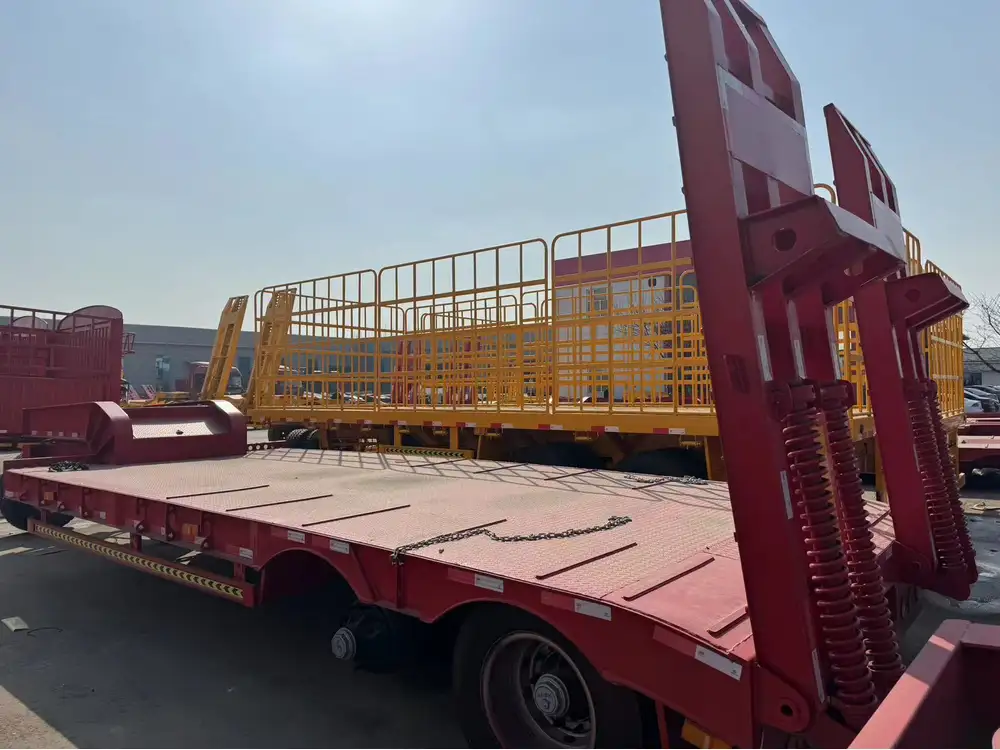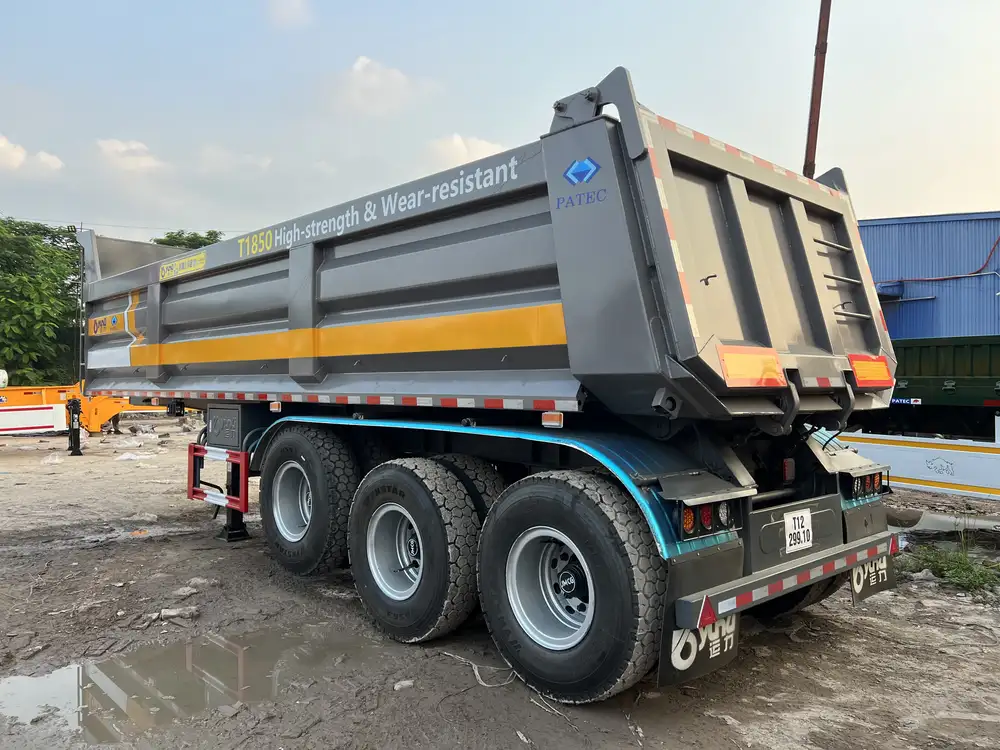In the robust world of logistics and freight transportation, semi-trailers play a pivotal role in facilitating the movement of goods across vast distances. Among these vehicles, the 53-foot trailer stands as a standard for many trucking businesses, renowned for its size, capacity, and versatility. Yet, within the mechanics of these trailers lie components that significantly enhance their performance and efficiency—one such component being the air tank. This article delves deeply into the purpose, importance, and nuances of air tanks in 53-foot trailers, aimed at equipping manufacturers, operators, and logistics managers with the critical insights needed for optimized performance.
What Is an Air Tank?
An air tank, often referred to as a compressed air reservoir, is a crucial element in pneumatic systems found in commercial trucks, particularly in 53-foot trailers. These tanks store compressed air produced by the truck’s air compressor, which is essential in various systems throughout the vehicle.
Key Functions of an Air Tank
- Storage of Compressed Air: Air tanks serve primarily as reservoirs that hold compressed air, allowing for the efficient operation of pneumatic systems.
- Brake Functionality: In many modern trailers, brakes are powered by air. The tank supplies the necessary air pressure, ensuring effective braking performance.
- Suspension Support: Air tanks contribute to air suspension systems, which are vital for maintaining optimal load distribution and vehicle stability.
- Powering Accessories: Many additional features, such as landing gear and trailers’ lifting mechanisms, rely on compressed air stored within the tank.

Types of Air Tanks
Understanding the different types of air tanks can provide greater insight into their operational significance:
| Type | Description |
|---|---|
| Vertical Tanks | Usually cylindrical with a vertical design, allowing for compact installation on tight spaces. |
| Horizontal Tanks | These tanks lie flat and are typically used when space permits. They can offer greater air volume. |
| Dome-Lid Tanks | Feature domed tops that provide structural integrity and help prevent moisture accumulation. |
How Air Tanks Work Within 53-Foot Trailers
To understand fully why air tanks are indispensable, it’s essential to explore their operational mechanics within a 53-foot trailer.
Compressed Air Production
- Air Compressor Activation: When the semi-trailer operates, the engine powers an air compressor, compressing atmospheric air.
- Storage in Air Tanks: The compressed air is channeled into the air tank, creating a reserve that can be utilized when needed.
- Distribution of Air: The stored compressed air is then distributed throughout the trailer’s pneumatic systems, such as brakes and air suspension, as required.

Air Management Systems
Air management in a 53-foot trailer involves several complex systems including:
- Anti-lock Braking Systems (ABS): Ensuring maximum control during emergency stops.
- Electronic Stability Control (ESC): Aiding the driver in maintaining control during adverse conditions.
- Air Suspension Systems: Adjusting the trailer’s ride height and improving its stability while loaded.
Maintenance Considerations
Maintaining the air tank is crucial for optimal performance and safety. Potential issues include:
- Build-up of Moisture: Regularly draining water from the tank is vital to prevent rust and corrosion.
- Pressure Regulation: Over-pressurization can lead to tank failure; thus, pressure relief valves are essential.
- Leak Checks: Periodic inspections for leaks can prevent air loss, which is critical for brake response times.
Problems Associated with Air Tanks in 53-Foot Trailers
Despite their crucial role, air tanks can be prone to various issues that may impact trailer efficiency and safety. Here’s a breakdown of common problems:

1. Corrosion and Rust
Over time, moisture accumulation can lead to corrosion. This degradation can significantly weaken the air tank structure, ultimately resulting in leaks or catastrophic failure.
2. Air Leaks
Air leaks can stem from faulty fittings or worn washers, causing insufficient pressure for braking or suspension systems. This can lead to heightened braking distances and unstable ride characteristics.
3. Inconsistent Air Pressure
Dramatic fluctuations in airflow and pressure can cause issues with brake responsiveness and suspension stability. Regular checks of the pressure gauge can help prevent these issues.

Choosing the Right Air Tank for Your 53-Foot Trailer
Selecting the appropriate air tank involves various considerations that can directly affect the trailer’s operational effectiveness.
Capacity and Size
Choosing the right size and capacity for the air tank often depends on the specific applications of the trailer. A larger capacity tank can store more air but may also increase weight; thus, a balance needs to be struck.
Material Composition
Air tanks are manufactured from various materials, including steel and aluminum. Steel tanks tend to be heavier but more durable against external impacts, while aluminum tanks offer a lighter weight with corrosion resistance.

Pressure Ratings
Ensure that the air tank selected has appropriate pressure ratings aligned with the trailer’s specifications and intended use.
Enhancing Performance with Air Tanks
Optimizing the performance of an air tank involves an understanding of auxiliary systems and technologies.
Upgrades and Retrofits
Consider upgrading older models of air tanks with advanced composites or high-performance designs that provide greater durability and efficiency. This will often translate to reduced maintenance needs and improved safety.

Integration with Modern Technologies
Modern air tank systems can now be integrated with monitoring technologies that provide real-time data on pressure levels, helping identify issues before they become critical.
Regular Testing and Compliance
Adherence to regulations regarding air tank maintenance and inspections can prevent failures during operation. Keeping records of inspections and ensuring compliance with industry standards is imperative.
Conclusion: The Indispensable Role of Air Tanks
The lifecycle of a 53-foot trailer is intricately connected to its air tank systems, playing a pivotal role not just in the operational efficacy of the trailer, but also in ensuring the safety of the goods transported and those on the road. As logistics continues to evolve, air tanks will remain a cornerstone of trailer design, merging functionality with technological advancements to meet the demands of modern freight transport.
To sum up, understanding what an air tank is, how it works, and its influence on various systems within a 53-foot trailer can lead to better decision-making for manufacturers and operators alike. Regular maintenance, astute selection processes, and a firm grip on technological advancements will inevitably enhance the performance and safety of trailers in transportation networks.
In a market increasingly focused on efficiency and safety, recognizing the value of air tanks is essential for any manufacturer or operator aiming to excel in the logistics industry. Investing in high-quality air tanks, maintaining them meticulously, and staying ahead of technological trends can make all the difference in achieving operational excellence.



